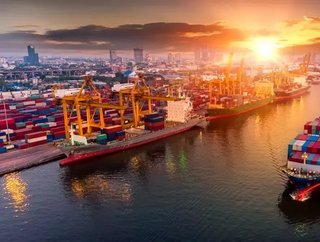Gartner: 6 Strategies for a More Resilient Supply Chain

Following a recent Gartner survey, 21% of respondents stated that they have a highly resilient network, which means good visibility and the agility to shift sourcing, manufacturing and distribution activities around quickly. It suggests that increasing resilience will be a priority for many as they emerge from the current crisis, with over half expected to be highly resilient within two to three years.
“Most supply chain leaders recognize that becoming more resilient is a necessity in the current environment,” said Geraint John, VP Analyst at Gartner. “However, measures such as alternative factories, dual sourcing and more generous safety stocks go against the well-versed philosophy of lean supply chains that has prevailed in recent decades.”
However, in most cases, increased resilience comes with additional costs. But, doing nothing can be significant. Here’s six major strategies supply chain leaders can pursue to build greater resilience into their networks.
1. Inventory and capacity buffers
Buffer capacity is the easiest way to increase resilience, whether in the form of underutilised production facilities or inventory in excess of safety stock requirements. The challenge is that buffers are expensive, which means that supply chain leaders have a harder time justifying it to the C-suite.
Leading companies use buffers in the form of surge capacity for new product launches or expansions into new growth areas. Companies can create buffer capacity by leveraging contract manufacturers strategically for their surge needs.
2. Manufacturing network diversification
Many companies have begun to diversify sourcing or manufacturing bases as a result of the US-China Trade War. For some, it has meant switching to new suppliers outside China or asking existing partners to supply them from elsewhere in Asia or in countries like Mexico. “Disruptions to supply chain operations have intensified in the past few years,” commented John. “This means that the cost of retaining multiple supply locations must be seen more as a cost of doing business, rather than an inefficiency."
3. Multisourcing
Following major disasters in Japan and Thailand in 2011, significant disruptions were felt by supply chains across the world and showcased companies’ reliance on single sources of supply. As a result, nearly finished cars could not be shipped to customers because of the missing, and often inexpensive, components. Multisourcing is considered the most effective way to mitigate this risk.
4. Nearshoring
Beyond multisourcing, some companies seek to decrease geographic dependence in their global networks and shorten cycle times for finished products. Regional or local supply chains can be more expensive, because they add more players and complexity to the ecosystem, while allowing for more control over inventory and transitioning the product closer to the end consumer.
5. Platform, product or plant harmonisation
The more regionalised the network, the more harmonised plant technology has to be to enable products to move easily throughout the network. The use of common vehicle platforms for a variety of models in the automotive industry is one well-established example of such harmonisation.
6. Ecosystem partnerships
As a result of the COVID-19 pandemic, it has outlined the necessity of having a diversified approach to sourcing. At the same time, collaboration with strategic raw material suppliers and external service partners is key to ensure greater resilience in the future. For organisations without the scale to support multiple locations on its own, strong relationships with contract manufacturers and global 3PLs can be critical to diversifying production and distribution to different countries. Gartner’s survey data shows that almost half of supply chain companies are either using external manufacturers or exploring how to support product moves, with a similar proportion engaging logistics partners for the same purpose.






